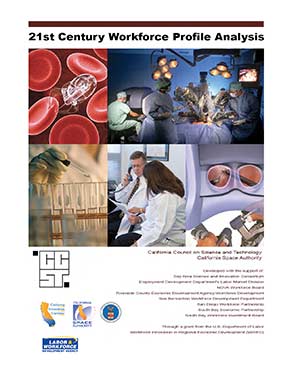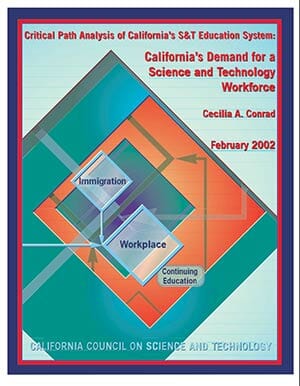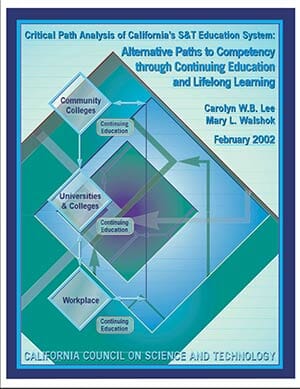21st Century Workforce Profile Analysis
Author(s): DeCillis, M. Daniel
Release Date: November 30, 2008 | Last Updated Date: February 20, 2015

Abstract
As part of the US Department of Labor WIRED initiative within the California Innovation Corridor, a coalition of partners including several Workforce Investment Boards (WIBs) and Economic Development Corporations, the Bay Area Science and Innovation Consortium, and the California Council on Science and Technology (CCST) were contracted to investigate workforce profiles necessary for global competitiveness for the 21st century. Under this scope of work, the WIBs, EDCs and BASIC conducted surveys and interviews in order to investigate the concerns and potential recommendations of employers and the universities involved in workforce preparation. This study is a component of the Innovation Support division of the Innovation Corridor mission, which includes seven projects designed to serve as resources for companies in the Corridor. The goals of this study were to:
- Identify key workforce skills sought by selected high-tech industries in the Corridor
- Assess workforce shortages in the selected industries
- Assess companies’ perceptions of the workforce production system(s) in California, and the degree to which they are or are not providing adequate numbers of workers possessing desired skills
- Provide data and recommendations to enable educators and workforce skill training providers to better meet the needs of both existing technical careers and those that could emerge from continuing advances in the specified fields
All of the groups surveyed – including recent PhD graduates, human resource professionals, and top executives, as well as the national laboratories and universities, stressed the need to ensure adequate communication skills for workers ranging from technicians to executives. There was widespread concern that the educational system is not providing sufficient numbers of adequately prepared people to meet the needs of a high-tech workforce. Finally, every group cited the need to improve the connection between the educational process and the experience and skills demanded by industry.






